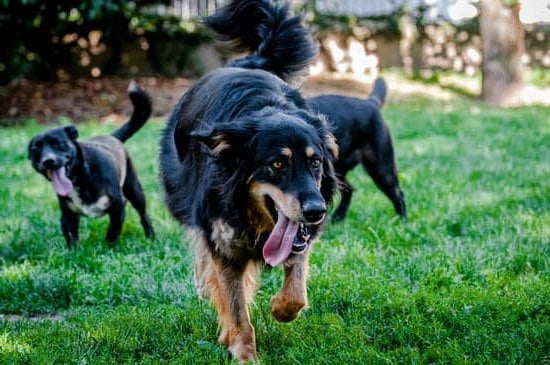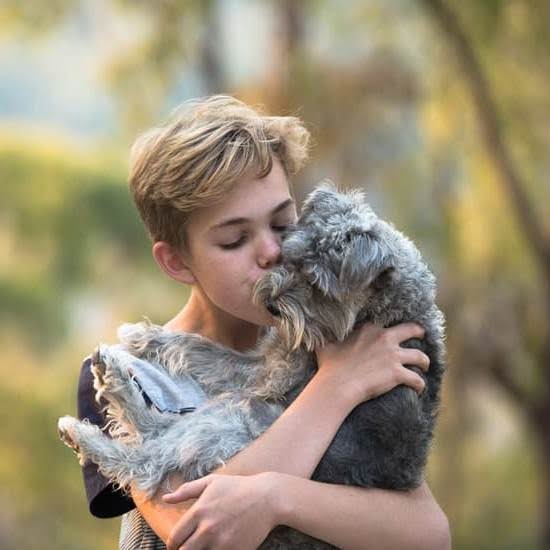Operant conditioning is a powerful tool for training dogs, utilizing positive and negative reinforcement to shape behaviors. In this article, we will explore how to train a dog using operant conditioning, focusing on the principles and techniques involved in this method.
Operant conditioning involves the modification of behavior through the use of consequences. By understanding the basics of this training method, dog owners can effectively communicate with their pets and encourage desired behaviors while discouraging unwanted ones. This approach emphasizes the importance of rewards and consequences in shaping a dog’s actions.
In the following sections, we will delve into the four quadrants of operant conditioning, discussing both reinforcement and punishment techniques. We will also explore how to apply these principles in dog training, emphasizing positive reinforcement strategies that promote a strong bond between owners and their canine companions. Whether you are looking to address specific behavioral issues or simply improve your dog’s overall obedience, operant conditioning offers a comprehensive framework for achieving training goals.
Understanding the Basics
Operant conditioning is a powerful and effective method for training dogs, based on the principles of behavior modification. But what exactly is operant conditioning, and how can it be applied to training our furry friends? In its simplest form, operant conditioning involves using consequences to modify the frequency of a dog’s behavior. By understanding this concept, dog owners can effectively shape their pet’s actions through positive reinforcement and other techniques.
One key aspect of operant conditioning is the idea that behavior is influenced by its consequences. In other words, if a behavior leads to a favorable outcome (such as receiving a treat), the dog is more likely to repeat that behavior in the future.
On the flip side, if a behavior leads to an unfavorable consequence (such as being ignored), the dog is less likely to engage in that behavior again. This simple premise forms the basis of how to train a dog using operant conditioning.
Positive reinforcement techniques are central to operant conditioning and are highly effective in shaping desired behaviors in dogs. This involves rewarding your dog with treats, praise, or playtime immediately after they exhibit the desired behavior. Over time, the dog learns to associate that specific action with a positive outcome and will be more inclined to repeat it. Through consistent practice and patience, dog owners can use positive reinforcement to teach new commands, improve obedience, and address behavioral issues successfully.
| Key Concepts | Details |
|---|---|
| Operant Conditioning | Using consequences to modify a dog’s behavior. |
| Positive Reinforcement | Rewarding desired behaviors with treats or praise. |
| Consistency | Importance of practicing operant conditioning techniques regularly. |
The Four Quadrants of Operant Conditioning
Operant conditioning is a powerful tool for training dogs and shaping their behavior. In this section, we will delve into the four quadrants of operant conditioning: reinforcement and punishment. Understanding these concepts is essential for effectively using operant conditioning techniques to train your furry companion.
Reinforcement involves increasing the likelihood of a behavior occurring again in the future. There are two types of reinforcement: positive reinforcement and negative reinforcement. Positive reinforcement involves giving a reward or something pleasurable immediately after a desired behavior is exhibited. This could be a treat, praise, or playtime. On the other hand, negative reinforcement involves removing something unpleasant to strengthen a behavior. An example of negative reinforcement would be stopping an annoying sound when the dog performs the desired action.
Punishment, on the other hand, aims to decrease the likelihood of a behavior happening again in the future. Like with reinforcement, there are two types of punishment: positive punishment and negative punishment. Positive punishment involves adding an undesirable consequence after an undesired behavior, such as a verbal reprimand or time-out.
Negative punishment consists of removing something desirable after an undesired behavior, like taking away a toy or attention from the dog. It is important to note that while punishment can be effective in certain situations, it should be used sparingly and always paired with positive reinforcement to avoid any negative effects on your dog’s well-being and training progress.
By understanding and applying these four quadrants of operant conditioning – positive reinforcement, negative reinforcement, positive punishment, and negative punishment – you can effectively train your dog using operant conditioning techniques. By utilizing these tools strategically and consistently, you can shape your dog’s behavior in a positive and rewarding way that strengthens your bond with them.
Applying Operant Conditioning to Dog Training
Operant conditioning is a powerful tool when it comes to training your furry companion. Positive reinforcement, one of the key components of operant conditioning, involves rewarding your dog for exhibiting desired behaviors. This technique focuses on encouraging the behavior you want to see more of, rather than punishing undesirable behaviors. By using positive reinforcement effectively, you can create a strong bond with your dog built on trust and respect.
Here are some positive reinforcement techniques you can use to train your dog using operant conditioning:
- Treat-based Training: Use small, tasty treats as rewards for good behavior. This can be especially effective for teaching basic commands such as sit, stay, and come.
- Clicker Training: Pairing a click sound with a treat helps pinpoint the exact moment your dog exhibits the desired behavior. This method works well for shaping more complex behaviors.
- Verbal Praise: Dogs thrive on verbal cues and positive affirmations from their owners. Simple phrases like “good boy” or “well done” can go a long way in reinforcing good behavior.
Remember that timing is crucial when using positive reinforcement techniques. The reward should be given immediately after the desired behavior is displayed to strengthen the association between the action and the reward. Consistency is also key – make sure to reward your dog every time they demonstrate the desired behavior to ensure clarity in their training.
In addition to treats and verbal praise, other forms of positive reinforcement such as playtime, toys, or affection can also be effective in motivating your dog during training sessions. Keep in mind that every dog is unique, so it may take some trial and error to find out what incentives work best for your furry friend.
By incorporating positive reinforcement techniques into your training plan, you can set your dog up for success while strengthening the bond between you both through mutual understanding and communication.
Utilizing Negative Reinforcement Safely and Effectively
Negative reinforcement is a crucial aspect of operant conditioning when it comes to training dogs. However, it is essential to understand how to utilize negative reinforcement safely and effectively to ensure that the training process is successful. Negative reinforcement involves removing an unpleasant stimulus in response to a behavior, thereby increasing the likelihood that the behavior will be repeated in the future. It is important to note that negative reinforcement should never involve physical punishment or harm towards the dog.
Setting Clear Cues and Signals
When using negative reinforcement in dog training, it is important to set clear cues and signals for your pet. This helps them understand what specific behavior you are looking for and what they need to do to avoid the unpleasant stimulus. Consistency is key when establishing these cues, as dogs thrive on routine and predictability. By providing clear signals, you can effectively communicate with your dog and make the training process more efficient.
Timing and Consistency
Another essential factor in utilizing negative reinforcement safely and effectively is timing and consistency. It is crucial to deliver the unpleasant stimulus immediately after the undesired behavior occurs, so that your dog can associate the two events. Consistency in applying negative reinforcement also helps reinforce the desired behavior more effectively.
Inconsistencies can lead to confusion and slow down the training progress. Remember that negative reinforcement should only be used sparingly and as a last resort, focusing primarily on positive reinforcement techniques.
Seeking Professional Guidance
If you are unsure about how to train a dog using operant conditioning, especially when it comes to negative reinforcement, seeking professional guidance can be incredibly beneficial. Professional dog trainers have extensive experience working with different breeds and behaviors, and they can provide valuable insights and guidance on utilizing negative reinforcement safely and effectively.
Additionally, they can help you develop a customized training plan tailored to your dog’s specific needs and temperament. By working with a professional trainer, you can ensure that you are using operant conditioning techniques correctly and setting your pet up for success in their training journey.
Avoiding Common Mistakes in Operant Conditioning With Dogs
Operant conditioning is a powerful tool in dog training, but it is important to avoid common mistakes that can hinder progress and create confusion for your furry companion. By understanding these pitfalls, you can ensure a smoother training process and better results in shaping your dog’s behavior.
To effectively train a dog using operant conditioning, it is crucial to remember the principles of consistency and clarity. One common mistake is inconsistency in applying reinforcement or punishment, which can lead to mixed signals and confusion for the dog. It is essential to establish clear cues and signals for desired behaviors, as well as consequences for unwanted behaviors, to avoid any ambiguity in the training process.
Another common mistake is using punishment incorrectly or excessively. While negative reinforcement can be an effective tool in operant conditioning, it should be used sparingly and with caution. Punishment should never be harsh or physical, as this can lead to fear or aggression in your dog. Instead, focus on positive reinforcement techniques such as praise, treats, or play to encourage desired behaviors.
Here are some key tips for avoiding common mistakes in operant conditioning with dogs:
- Be consistent in your training approach
- Avoid using punishment excessively
- Focus on positive reinforcement techniques
By following these guidelines and staying mindful of potential pitfalls, you can effectively train your dog using operant conditioning while ensuring a positive and rewarding experience for both you and your canine companion. Remember that patience and consistency are key when shaping behavior through this training method.
Developing a Training Plan
When it comes to training your dog using operant conditioning techniques, one of the key elements to success is developing a solid training plan. Setting clear goals and tracking your progress are essential in ensuring that you and your furry friend stay on the right track towards achieving desired behaviors. By taking the time to establish a plan, you can effectively communicate with your dog what is expected of them and create a roadmap for reaching training milestones.
Setting Clear Goals
Before diving into training sessions with your dog, it’s important to clearly define what behaviors you want to work on and what specific outcomes you hope to achieve. Whether it’s teaching your pup to sit, come when called, or walk politely on a leash, setting clear goals will help keep you focused and provide direction during training sessions. Make sure that your goals are realistic, achievable, and tailored to your individual dog’s needs and abilities.
Tracking Progress
Once you have established your training goals, it’s crucial to track your progress along the way. Keeping a training journal or log can be a helpful tool in monitoring how your dog is responding to different techniques and identifying any areas where adjustments may be needed.
By documenting each training session, you can track improvements over time, identify patterns or challenges that may arise, and celebrate successes along the journey. This not only helps keep you organized but also allows you to make informed decisions about tweaking your training approach as needed.
Consistency Is Key
Consistency is key when developing a training plan for your dog using operant conditioning. Dogs thrive on routine and predictability, so it’s important to be consistent in both the cues you use during training and the consequences that follow their behavior.
By maintaining consistency in your expectations and responses, you can help avoid confusion for your pup and set them up for success in learning new behaviors through reinforcement techniques. Remember that patience, practice, and positive reinforcement are all vital components of effective operant conditioning training methods for dogs.
Case Studies
One of the most effective ways to understand how to train a dog using operant conditioning is by looking at real-life examples of successful training. These case studies can provide valuable insights into the practical application of operant conditioning techniques and demonstrate the amazing results that can be achieved through consistent and positive reinforcement.
For instance, let’s consider a case study where a young Labrador retriever named Max was exhibiting destructive chewing behavior. Instead of resorting to punishment, Max’s owner decided to use positive reinforcement techniques based on operant conditioning. Whenever Max engaged in appropriate chewing behavior with his toys instead of household items, he was rewarded with treats and praise. Over time, Max learned that he would receive rewards for good behavior, leading him to gradually abandon his destructive chewing habits.
Another example could be a case study involving a rescue dog named Bella who displayed fear and aggression towards strangers. By using operant conditioning principles, Bella’s trainer implemented a desensitization and counterconditioning program.
Through systematic exposure to strangers at a distance and rewarding Bella for calm behavior, she slowly learned to associate strangers with positive experiences rather than fear or aggression. With patience and consistency, Bella was able to overcome her fear issues and greet new people without any signs of aggression.
These case studies highlight the effectiveness of using operant conditioning in dog training to modify behaviors positively. By understanding the four quadrants of operant conditioning and applying techniques such as positive reinforcement and desensitization, dog owners can address various behavioral issues in a humane and efficient manner. It is essential to remember that each dog is unique, so tailoring training programs based on individual needs and preferences is key to achieving success in behavior modification through operant conditioning.
Advanced Techniques
Shaping behavior is a powerful technique used in dog training that involves gradually molding and reinforcing behaviors to achieve a desired outcome. This method is particularly useful when teaching complex behaviors or tricks that cannot be easily accomplished all at once.
To shape behavior effectively, you must break down the final behavior into smaller achievable steps. For example, if you want your dog to learn how to roll over, you can start by rewarding them for lying down on command, then for shifting their weight to one side, until eventually they are able to perform the full roll over motion.
Variable reinforcement schedules are another advanced technique derived from operant conditioning that can be highly effective in dog training. Instead of providing a reward every time a desired behavior is performed (as with continuous reinforcement), variable reinforcement involves randomly rewarding the behavior.
This unpredictability keeps the dog engaged and motivated to continue performing the behavior in hopes of receiving a reward. This technique has been shown to increase the durability and strength of behaviors as dogs become more persistent in seeking out rewards.
When implementing shaping behavior and variable reinforcement schedules in dog training, it is essential to remember the principles of operant conditioning. Always use positive reinforcement techniques such as treats, praise, or toys to reinforce desired behaviors rather than punishment or aversive methods.
By consistently rewarding your dog for incremental steps towards the final goal and varying the timing and type of rewards given, you can effectively shape their behavior and maintain long-lasting results. Remember, patience, consistency, and positive reinforcement are key components in successfully training a dog using operant conditioning techniques.
Conclusion
In conclusion, operant conditioning is a highly effective and humane method for training dogs that focuses on using positive reinforcement to encourage desired behaviors. By understanding the basics of operant conditioning, such as the four quadrants of reinforcement and punishment, dog owners can tailor their training methods to suit their individual pet’s needs. Positive reinforcement techniques have been proven to be especially successful in shaping behavior and fostering a strong bond between dogs and their owners.
When implementing operant conditioning in dog training, it is important to remember the significance of setting specific goals and tracking progress throughout the process. This allows for adjustments to be made as needed and ensures that both the dog and the trainer are making steady progress towards their objectives. Additionally, utilizing negative reinforcement safely and effectively can further enhance the training experience for both parties involved.
By avoiding common mistakes in operant conditioning with dogs, such as inconsistent reinforcement or overly harsh punishment, dog owners can create a positive and enriching learning environment for their pets. With dedication, patience, and a well-thought-out training plan, using operant conditioning can lead to long-term success in modifying your dog’s behavior positively. Overall, embracing this method of training not only benefits your furry companion but also strengthens the bond between you both for years to come.
Frequently Asked Questions
What Are the 4 Strategies of Operant Conditioning?
The four strategies of operant conditioning are positive reinforcement, negative reinforcement, positive punishment, and negative punishment. Positive reinforcement involves adding a desirable stimulus to increase the likelihood of a behavior. Negative reinforcement involves removing an aversive stimulus to increase behavior. Positive punishment adds an aversive consequence to decrease behavior, while negative punishment removes a pleasant stimulus to decrease behavior.
What Is an Example of Operant Conditioning in Animal Behavior?
An example of operant conditioning in animal behavior is training a dolphin to perform tricks at an aquarium. When the dolphin successfully performs a trick like jumping through a hoop, it receives a reward such as fish as positive reinforcement. Over time, this strengthens the behavior of jumping through the hoop because it associates the action with a positive outcome.
What Type of Conditioning Is Used in Dog Training?
Dog training often utilizes classical conditioning as well as operant conditioning techniques. In dog training, positive reinforcement like treats or praise is commonly used to reward desired behaviors such as sitting or staying on command.
Training also involves using negative punishment by ignoring undesirable behaviors or withdrawing attention when they occur to discourage them from happening in the future. By combining these principles, trainers can effectively shape and modify canine behavior.

Welcome to the blog! I am a professional dog trainer and have been working with dogs for many years. In this blog, I will be discussing various topics related to dog training, including tips, tricks, and advice. I hope you find this information helpful and informative. Thanks for reading!





